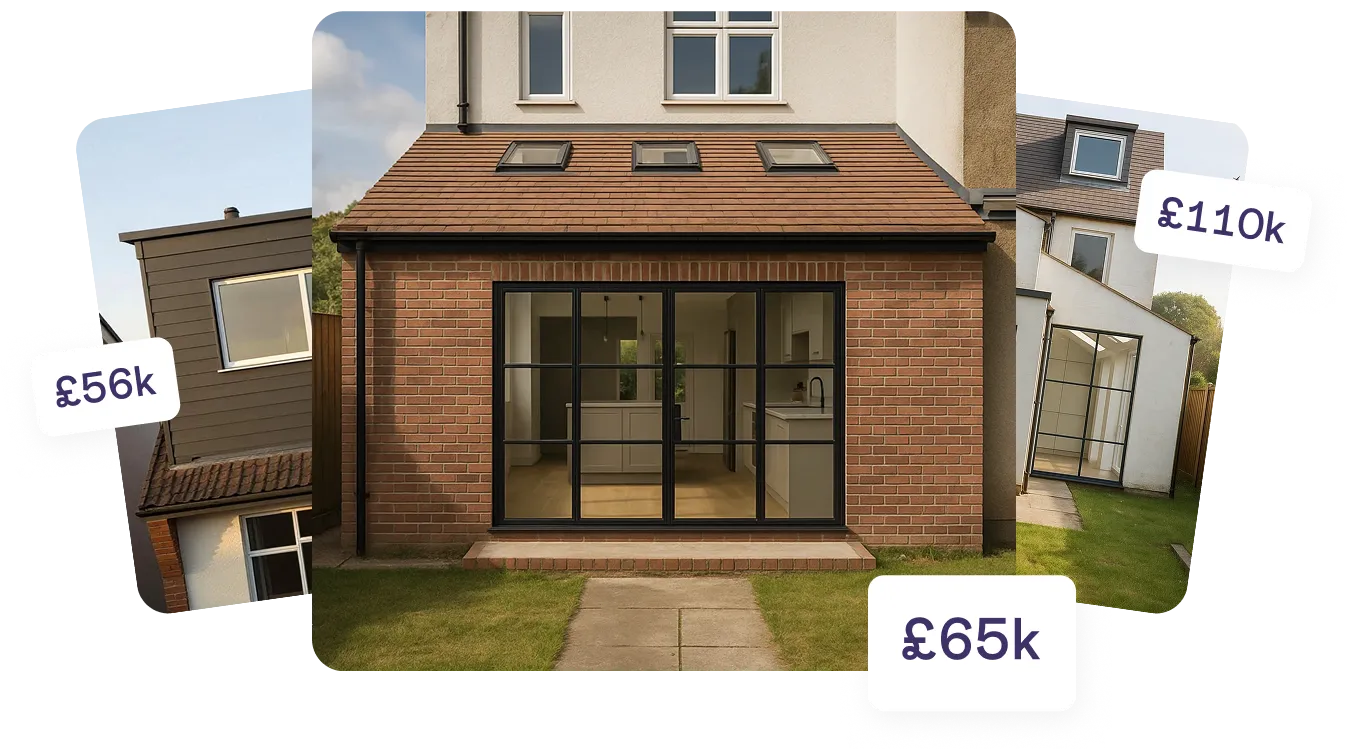The most obvious benefit is how much extra space you’ll enjoy. Garden rooms come in all different sizes, so the more garden you have to spare, the bigger your garden room can be. Of course, you will need to bear in mind planning restrictions when it comes to larger garden rooms. Especially big garden rooms may need a full planning application - but don’t let this put you off. With an experienced designer by your side, securing approval can be a breeze!
More affordable
Because you won’t have to renovate any existing areas alongside your build, and because you won’t need to move out of the property at this time, garden room extensions tend to be more affordable than other extension types. To keep costs down further, you may even choose to do down the pre-fabrication route, which can have a big impact on costs (though will limit your design options).
Less disruptive than other house extensions
While other extensions will involve builders coming in and out of your house, potentially cutting off vital areas of your home (such as the kitchen), a garden room build can be self-contained in your garden. This will keep the distribution to the rest of the house to a minimum and can mean you avoid needing to rent while it's brought to life. And once the garden room is complete, this self-contained area will be the perfect place to contain any disruptive activities - drum practice, anyone?
A multipurpose room with lots of versatility
Garden rooms are the heroes of versatility and are essentially a blank slate for you to play with. If you don’t believe us, here are just some garden room extension ideas you could explore...
- Gym
- Office
- Music room
- Playroom
- Art studio
- Guest room
- Garden kitchen
- Summer dining space
- Pool house
Alternatives to garden rooms
While garden rooms are fantastic, it’s not the only home extension on the market. If you lack the garden space required or simply want to explore your options, you might want to consider these alternatives.
Get free quotes for different extensions here
Building a conservatory
Conservatories can be just as cost-effective as a garden room and are typically added to the rear of a property. This allows them to extend key living spaces, such as your kitchen or dining room. If you would rather increase the square footage of a communal area, rather than have something detached, this could be the option for you.
Conservatory pros
- Can be as cost-effective as garden rooms
- Can be used to expand communal areas
- They bring in lots of natural light into your property
- Creates panoramic views of your green space
- Included under permitted development rights
Conservatory cons
- Dated uPVC conservatories can be detrimental to the value of your home
- Cheap glazing can result in a greenhouse effect (too cold in winter and too hot in summer)
- The amount of glazing means they’re not suited to housing major appliances
- When used to extend a kitchen, they can result in high levels of condensation
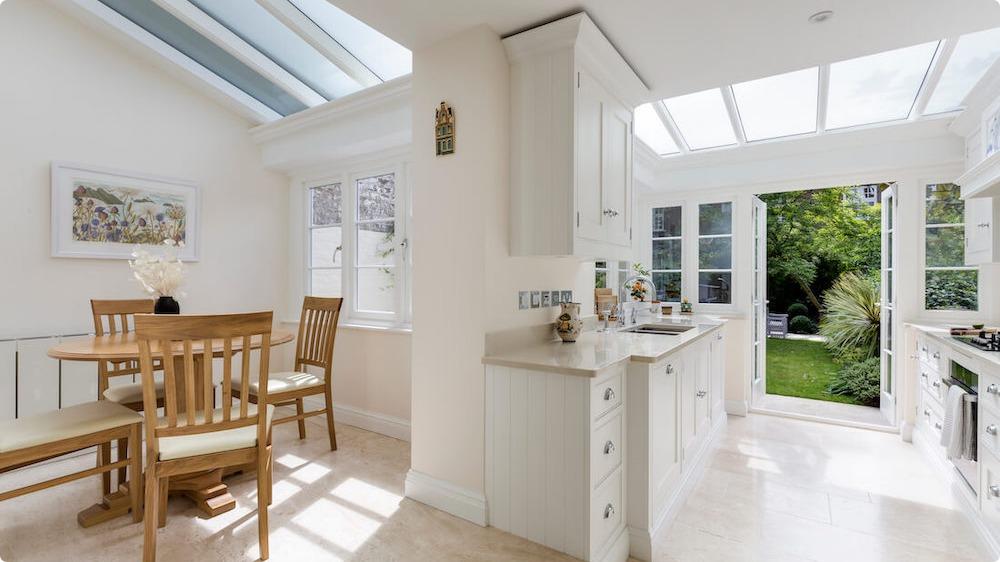
Loft conversion
If you’ve got some loft space going spare, a new conversion could be a fantastic alternative to a garden room, especially if you wanted to add a new bedroom. While ground floor bedrooms are more accessible, you’ll find top floor suites bring in more added home value. And much like a garden room, by adding a whole new storey of space, you give yourself a blank canvas to work with.
Loft conversion pros
- Can have a more positive effect on the value of your house
- Qualifies for permitted development rights
- Creates a flexible new storey of space
- Can be used to increase insulation in your roof
- Balconies can be used to create extra outdoor space
- Doesn’t require garden space to be sacrificed
Loft conversion cons
- Require suitable loft space to be present
- Typically more expensive than garden rooms and conservatories
- Not suitable for home gyms unless the floor is reinforced
- Construction can cause disruption and be lengthy
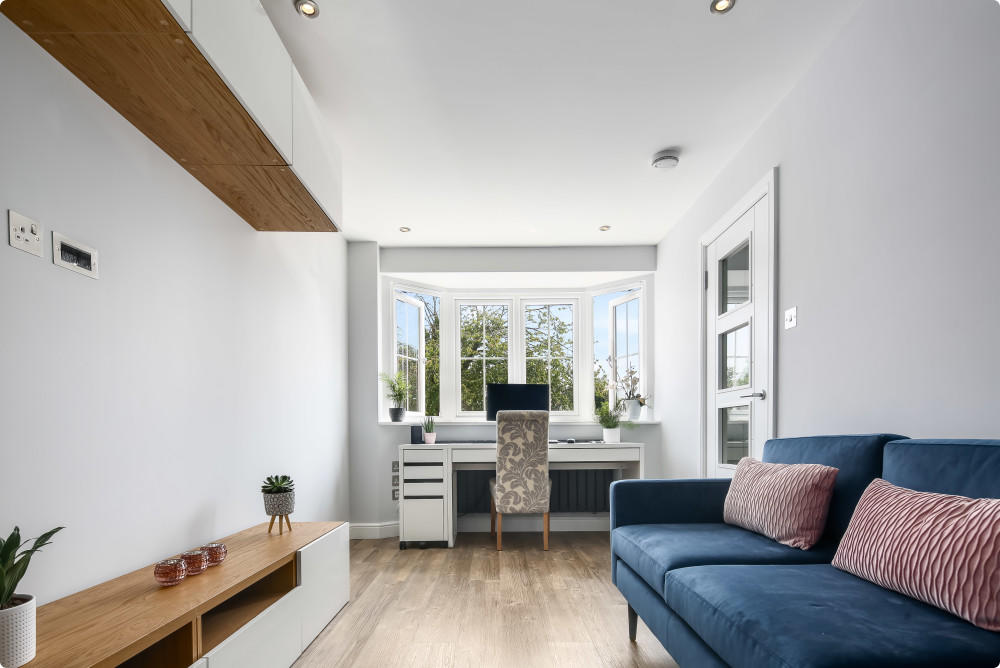
Garage conversion
Garage conversions and garden rooms can be one of the same if you’re extending a detached building. However, even if your garage is attached to your property, you can still use it to create a slick new extension. This is another cost-effective project, as the preexisting structure will help keep costs down and limit the time needed during construction. You can choose to keep your garage conversion as a separate space, turning it either into an office, gym, bedroom, or playroom, or connect it to the living room/kitchen to create one large open-plan layout.
Garage conversion pros
- A very cost-effective way to extend your home
- Can be used as a self-contained or open-plan space
- Included in your permitted development rights
- Doesn’t require garden space to be lost
Garage conversion cons
- You will lose car storage space
- If parking is at a premium in your area, losing a garage can damage the value of your home
- Some councils will prevent garage conversions if they’re worried about local parking
- Interior renovation might be needed if you want it to blend into an existing area
Garden room extension costs
If you’re building a garden room from scratch, it’s likely you’ll be looking at the following costs during construction.
Basic build, using a one-man contractor: £1500/m2
Standard, high-quality build: medium scale contractor: £1650/m2
Premium quality build, large scale building contractor: £1800/m2
Get a quick quote for your garden room extension here.
Of course, costs will vary wildly, depending on…
- Your location
- Size and complexity of your project
- Type of contractor used
- Quality of materials used
- Prep work required
Learn more: a breakdown of garden room extension costs.
How much value does a garden room bring to my home?
Depending on the project, a garden room extension could add 10-20% to your home’s value.
However, it’s worth remembering that markets fluctuate and so these figures are liable to change. You’ll also find value will be determined heavily by the kind of space you’ve created. Bedrooms tend to contribute the most, but luxurious home offices have also been pushing house prices up. Even your interior design choices can have an impact.
If you’re extending with added value in mind, make sure you discuss your project with a local estate agent. You’ll want to understand local ceiling prices and ensure that your home isn’t already worth the most it can be on the market.
Do I need planning permission to build a garden room extension?
Do you need planning permission? Not necessarily.
Garden rooms can fall under your permitted development rights, which means you won’t require a full planning application, provided your project complies with the outbuilding design guidelines. These are…
- Outbuildings and garages to be single storey with maximum eaves height of 2.5 metres and maximum overall height of four metres with a dual pitched roof or three metres for any other roof.
- Maximum height of 2.5 metres in the case of a building, enclosure or container within two metres of a boundary of the curtilage of the dwellinghouse.
- No verandas, balconies or raised platforms (a platform must not exceed 0.3 metres in height)
- No more than half the area of land around the "original house"* would be covered by additions or other buildings.
- In National Parks, the Broads, Areas of Outstanding Natural Beauty and World Heritage Sites the maximum area to be covered by buildings, enclosures, containers and pools more than 20 metres from the house to be limited to 10 square metres.
Discover your garden room planning options with a free consultation
It’s worth noting the rules concerning permitted development are quite technical, so we always recommend working with an experienced designer. It’s also hugely important that you apply for a lawful development certificate, as you’ll need to prove your build was legal at the time of construction - especially if you plan on selling in the future.
Bedrooms and annexes
One very important thing to consider is the difference between a garden room and an annexe. If you intend to have some live inside your extension - meaning it includes a bedroom - then you’ll beholden to different planning rules and will likely need a full planning application.
Garden room design ideas
Garden rooms are becoming more and more popular as we find we need more space in our homes. We asked our interior design partners, My Bespoke Room, to share their design ideas for garden rooms to inspire you.
Design idea 1: Garden Office
One of the most popular uses of a garden room, especially since lockdown, has been a garden office. Many choose to build a space separate from the house and the family life to get a better work-life balance.
If you’re considering building a garden office then the first thing you should think about is sunlight. Glare is a serious problem when working on screens as well as if your considering installing a TV for a movie room. Next think about adding soft and warm elements, after all, it's not summer forever! We suggest adding soft throw pillows, furry rugs and even a sofa in your garden office to soften the space, making it feel more cosy.
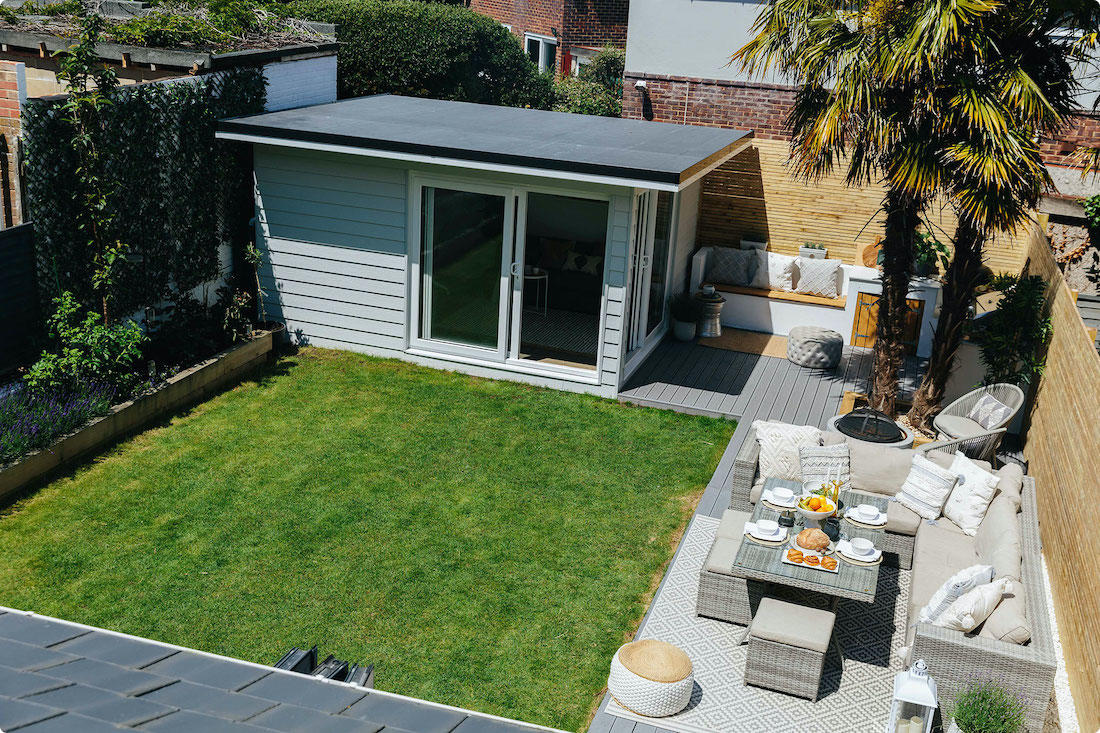
Design idea 2: Yoga or Spa Studio
You could also create a Yoga Studio or Spa for instance, or maybe you’re thinking more along the lines of a hobby room? You can build anything from an art or recording studio to a cosy reading nook. Many opt to have a more social space in their garden room. There seems to be a big increase in those building Garden Bars, games rooms or man caves!
When decorating this space, don’t think that you’re staring from scratch. Instead, try and keep the theme of the house. Keep it simple and select the aspects and design features that you love from your home and implement it in your garden room.
Whenever you renovate your home you should always make new aspects look like they always belonged and its no different for a garden room. When looking at the outside of your garden room, the garden surrounding it should take elements from other parts of your garden, in keeping with the theme of the space.
If you want more time for yourself a garden room could be for you! If you want to start putting yourself first then click here to start creating your garden room oasis today.
A successful garden room in the heart of London

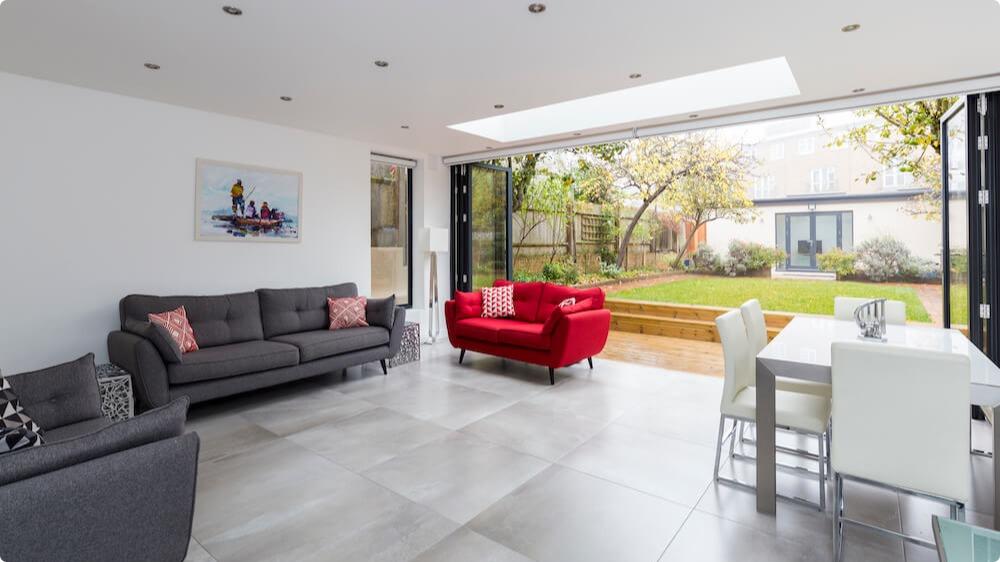
This garden room was added to the garden of a ground floor flat in London. We envisioned it to be a self-contained living space, where the family’s elderly relative could find some privacy in the hustle of the capital. The room also has the potential to go on the rental market, should the family wish. Key features include open plan living and large bi-fold doors, which open out on the garden.






